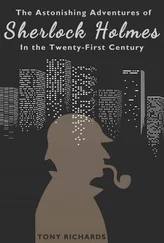I have the link to the gallery, the person who looks after my work, and I talk to them regularly – a few times a week – but I’ve tended not to have somebody coming in to say, “I’d like to show that and I’d like to show that.” There’s nothing like that. They say, “Are you going to be ready in September?” and I always push it. I’ll say, “I don’t know, I’ll tell you in March.” And then, in March, I’ll say, “Can we go for Spring next year?” They’re used to me and I know that there is an elastic level that I can get to but, once I’ve made the commitment to that show date and said, “Okay, let’s do that,” they book the trucks and then I know I’ve got to get it done.’
I saw a film of trucks coming to take the panels of David Hockney’s Bigger Trees Near Warter at Tate Britain recently.
‘I’ve had guys have to have cups of tea in my kitchen because I’ve said, “I’m not ready, you’ll have to wait a bit.”’
Hours or days?
‘I get them to take the paintings piecemeal so, say it’s eight paintings, they’ll take three first and then they’ll come and get another two and then another two and it goes like that for about six weeks.’
Is that to get them out of the space or so you won’t fiddle with them?
‘So I can’t fiddle. I can’t juggle them all at the same time, but in one case the last truck was coming to pick up the last two and I only let them take one. I said, “The other one’s not done,” but the whole show was pivoted around that piece and I didn’t have a lot of work so it wasn’t as if you could leave anything out. The person at the gallery had to find a military airbase in Scotland to fly the last painting to New York.
I had a taxi outside my studio door and then I went, covered in paint, to Heathrow and got changed at the airport and the painting went to the airbase.’
Was it on a military flight?
‘It was a cargo flight that went out of a military base. It was the only flight that was going – the other ones had to go to Frankfurt first because they were too big to go in a regular cargo plane. I know what the biggest size you can get on a cargo plane is because I’ve pushed for the canvas stretcher to be as big as it could go … but I’m not so dramatic as that any more. I used to love the drama of that, you know (mad staring eyes), “I need more time! Arrrgh!”’
I’m an artist!
‘Exactly. “I’m not ready! You can’t have it!” The gallery person is freaking out because they’re going to get killed for not getting that painting on the truck, and they are also tied by “But we need to respect you because you’re an artist …” so you’ve got this bit of elastic where you’re pulling “Arrgh! I can spend another night on the nose …” Then you get to New York and everything arrives, or you get there and they’re still locked in customs and you’re going, “What the fuck!? Where the fuck are they!?” It tends to always work out in the end … but I don’t know if that’s really the best way to make art. It’s okay when you’re in your twenties and you’ve got tons of energy and don’t sleep for two weeks at a time but I think, once you get a bit older, it’s much better to let the work generate itself together. But I know of people who, I mean, Giacometti couldn’t let anything out of his studio – for years he wouldn’t let anything go.’
• • • • •
I think of Rothko exhibiting in his Bowery studio and then to the book Jenny published with Rizzoli whose pages were filled with images of her own workspace – glimpses of mirrors, ladders and platforms. Is Jenny still up and down scaffolds? I wonder.
‘I am but I haven’t worked on anything huge for a while. In Palermo I built a second floor on wheels. It had a palette table, the whole thing at different levels, but what I really want is to buy a studio and have a hole dug in the floor so I can let the painting down and up because I find that when I paint on a scaffolding I don’t paint as well because I can’t walk back to look. I like being on the ground. I want an inspection pit!
I’ve tried painting sideways but you get a slightly wonky head, so now I make the effort to go up and down a ladder. It’s a lot, though, up and down for every single mark.’
Do you have to think more in terms of landscapes when you’re painting sideways?
‘Yes, or an abstract painting. Thinking of space and the ways things work in space. I’ve tried multiple ways of working – collapsible scaffolding, second floors, ladders … ladders in the end are the things that I like but I don’t have the same desire to make enormous paintings. I’ll make paintings the scale of that wall, but it’s an enormous emotional job to make a painting on that scale, getting it to work. I suppose my equivalent of that is having seven or eight heads on the go at the same time, which is what I’ve got going on with these Stares. I’ll probably come back round to large work again but, you know, I’ve got two babies now so …’
You’re busy.
‘Yeah. To do that was pretty gruelling, physically. Maybe I’ll do another one in a couple of years but I like this current scale. It’s a good scale for me.’
It’s still relatively massive, you know! (Laughter)
‘I do get kinda shocked. I saw a painting I did called Hyphen – my sister and myself, heads, and I loved making that painting, I really flew. I was at the top of my game and had a great studio in London – I’d forgotten the paint was so thick, you know? I was trowelling it on. Everything is quite precise, I get the paint in the right place, but I don’t think I could make that painting now; not in the same way. I remember the studio had fantastic lino floor tiles from the sixties and I pulled them up, they were bendy. You could get the paint on and literally go like that with it (mimes smearing paint up and over with a lino squeegee) – sort of like plastering but it gave the same feeling as when a plastic surgeon pulls the flesh, so I was getting a tension and able to use the paint in a sculptural sense on the surface.
I’d ripped up all the floor tiles in that studio by the end.’
• • • • •
I heard on the radio the other day that Philip Glass was still driving a taxi at forty-one. You had your break quite early on – no time spent in the wilderness working up your practice. How has that shaped your development?
‘Well, it wasn’t the great easy ride that people sometimes imagine.
It’s seen that I’ve always had money but I was making shows in New York absolutely broke – eating an orange in five days, scraping out paint from old tubes – because everything I earned went on studio rent. You work for two and a half years on six pieces, and you’re not selling. The money just goes. It’s draining to work like that.
It’s nice to make a complete story “from Saatchi Gallery to Gagosian in New York” – a very singular ladder, but it’s not actually like that.
‘I made this very big painting called Fulcrum and that I nicknamed “The Bitch”. I couldn’t get it working. I spent more than eighteen months trying to get the figures together and the paint the way I wanted. It was a gruelling act of faith to keep at it because I should have probably trashed it but I’m a bit stubborn like that, I keep going but, yes, I suppose I don’t know what it’s like to have years in the wilderness, that’s for sure. I’ve been extremely lucky like that. I came out of art school and had a commission to make work for the Saatchi Gallery; that was the lottery ticket that I got.’
But you also had the pressure of being a high-profile and recognised artist from the very beginning. Lots of pressure. A very steep learning curve.
‘But when you’re young, I mean; I had no fear. As soon as Charles said, “Okay, do whatever you want with the space,” I just knew “I want this 21-foot triptych, I’m going to make it in three panels and it’s going to be like this.” My God! You know? Who else is going to buy that kind of scale of work? The dream that you’ve got of making such pieces; most people don’t have the finance to follow that through because they’ve got to do the nitty-gritty stuff of selling drawings or whatever, and I was extremely lucky in that sense: I wanted to make those big works and I could do it. And I did.
Читать дальше












